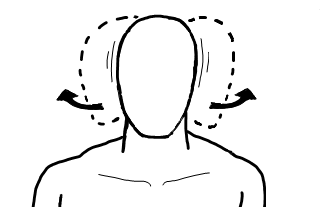In previous posts, we explored the lower segments of the spinal column looking at the lumbar and thoracic vertebrae. You can read those previous posts by checking out Part 1 and Part 2. This week we look to the cervical spine for its function and health along with how it plays a huge role in the golf swing.

Before we look into the neck, let us talk again about the importance of a mobile rib cage area. For many, this just is not the case. To begin to open up the facet joints along the thoracic area, start with gaining extension. By extending the spine, or opening the chest, the facet joints experience less of a load which then allows for more gliding motion leading to better turn both directions. (Read more in Part 2) To maintain an open chest and control rotational stability, one should work on scapular stability which allows for better rotational control while creating a solid base for the cervical spine to sit upon.
To test the health of your cervical spine, start by lying on your back. Roll your head to one side then to the other. Does one direction feel tighter than the other? Perform the same drill seated looking over one shoulder then another and assess.

Where does this play a role in the swing? When you are at the top of your swing, as long as the nose is still facing towards the ground, your chin should be near or on the lead shoulder; visa versa for the finish of the swing. The combined mobility of the cervical and thoracic vertebrae should allow for increased rotation end to end. For example, if you feel stiff getting to the finish of your swing, work on thoracic rotation the lead side and cervical rotation to the opposite direction for maximum flexibility.
These tests are a quick indicator of where to place your focus. If the neck is stiff, spend time working on mobility. If the shoulders felt weak, place your energy in creating strength and stability throughout the shoulder blades. Always spend time on the areas that need the attention the most and never sacrifice stability for mobility. By creating efficient movement in the body will result in a more efficient golf swing.
If you try these exercises and you find them to be too challenging or uncomfortable, do not continue, until you have consulted with your physician. All exercises for golf should be customized to your needs after a proper evaluation.
Come In and See Us
Want to take your golf to the next level? Our FitGolf® Trainers are experts at working one-on-one with you to tailor a training program to meet the specific needs of your body and help you achieve the results you are hoping to see in your golf.
Want More Resources?
Looking for more exercise resources, blog posts or monthly golf-specific exercise content sent straight to your inbox?
